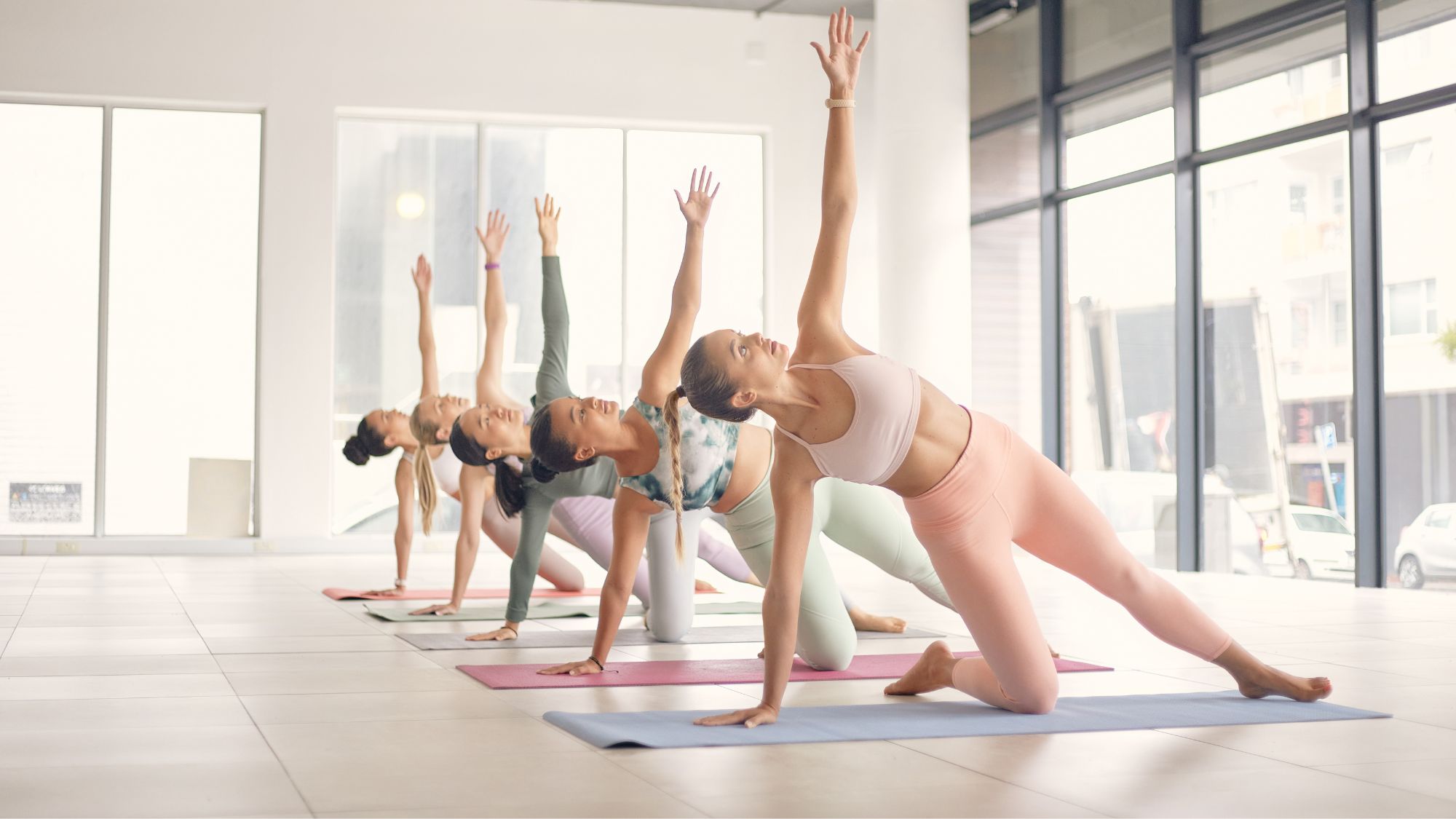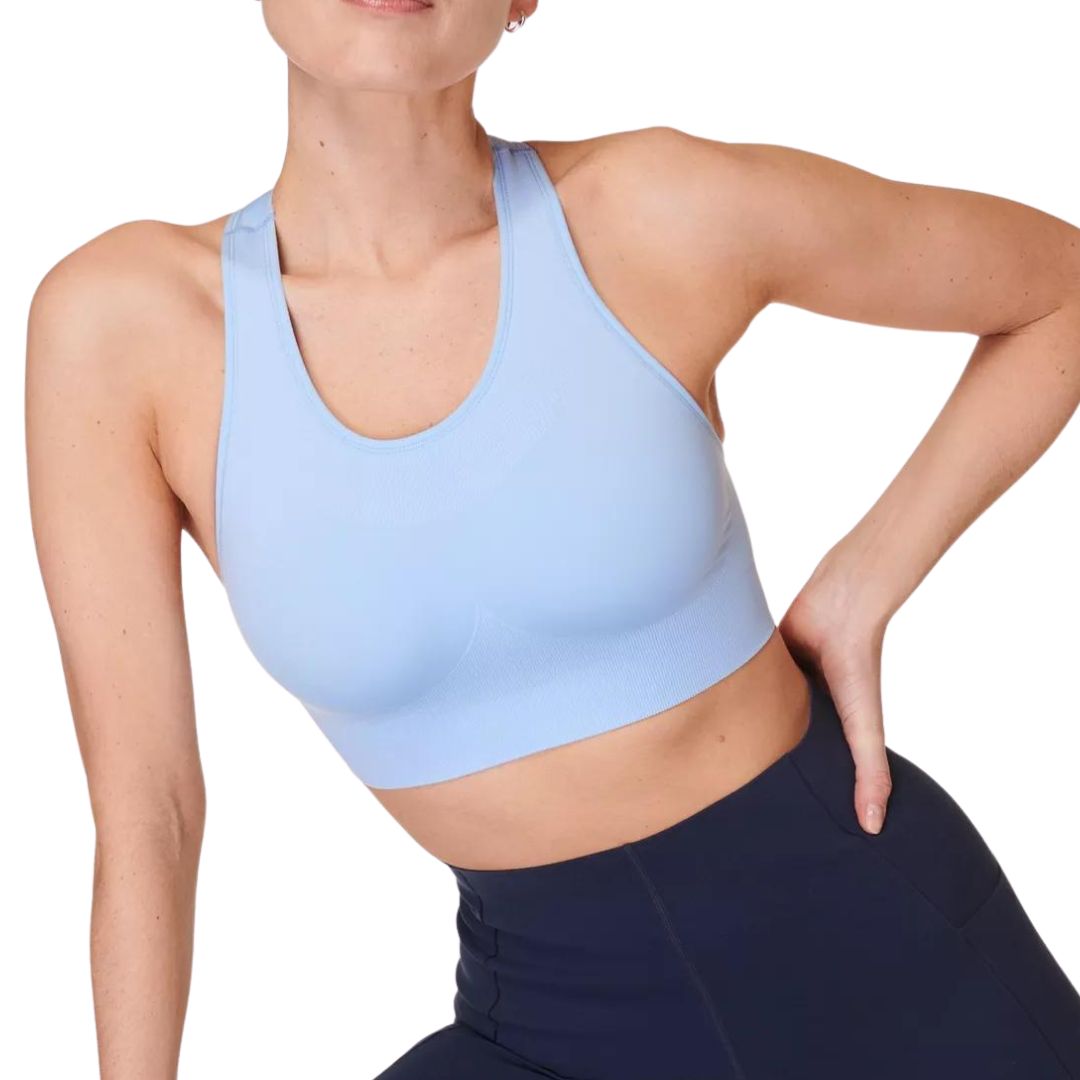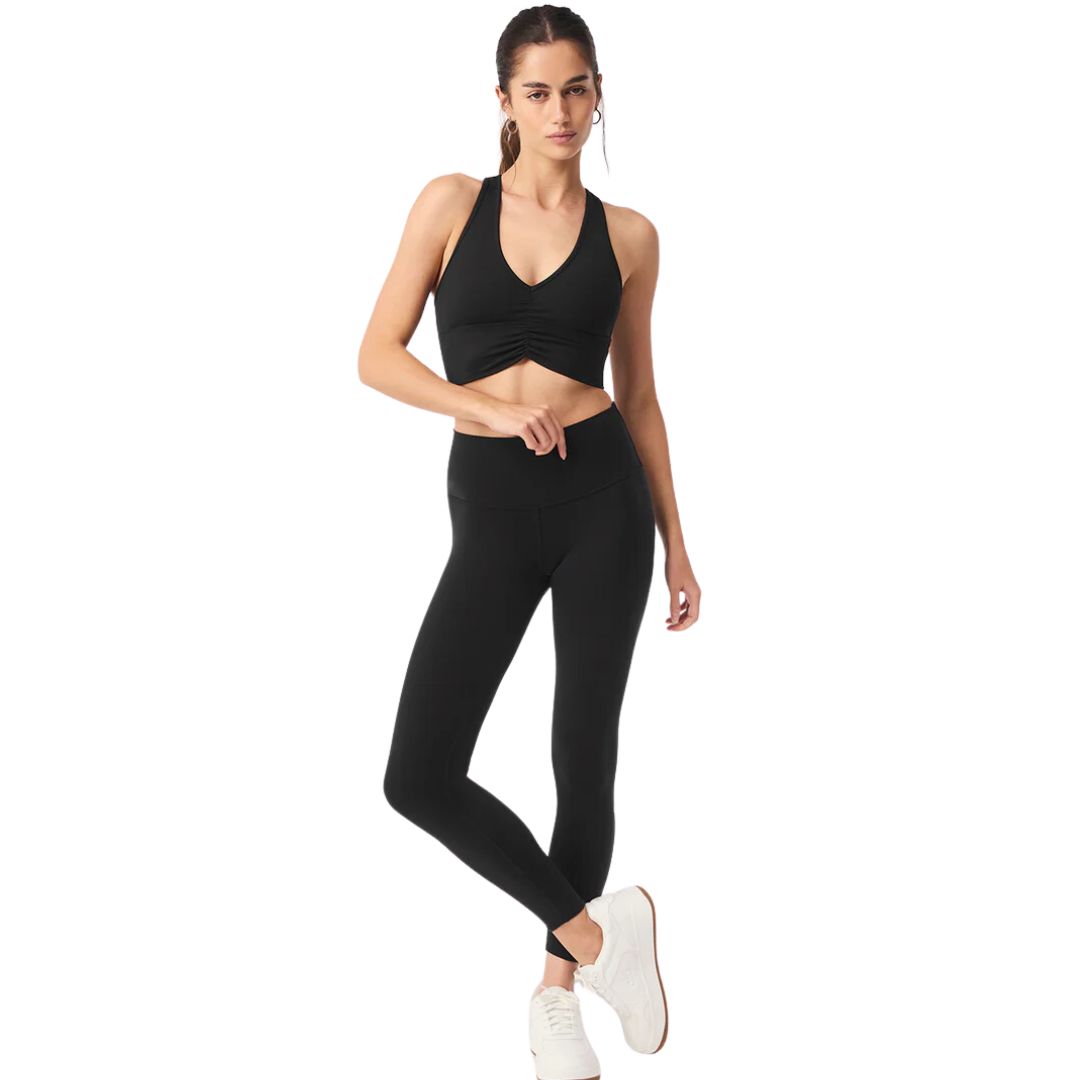How to restart your workout routine, if you've been busy but feel motivated to get back into fitness
Had an exercise sabbatical? Here's how to restart your workout routine


As a Health Writer, if there's one thing I'm asked more than anything, it's how to restart your workout routine, if you've taken an exercise hiatus but want to get back into a routine.
While the sun is (finally) shining, this time of year can be tricky for sticking to a regular routine, with holidays planned and schools out for summer. And we totally endorse taking a fitness sabbatical - after all, a rest is way more beneficial to body and mind than trying to keep up with an unrealistic regime.
That said, we're all about encouraging everyone to move more, in whatever way works for us as individuals. And the science for doing so really stacks up: studies (like this one, from the American Medical Association) consistently show the benefits of exercise for physical and mental health, too. But we also understand how tough it can be to get back in the zone after a little time off and if your exercise motivation is lacking.
With this in mind, we asked top personal trainers for their favourite tips for restarting a fitness routine after any kind of break (long or short - it's always worth doing). Consider this your complete guide - you can thank us later.
Don't miss our guide to how to get motivated to workout plus Health Editor Ally's go-to tips for building an achievable morning workout routine, while you're at it.
How to restart your workout routine, if you're looking to get back into fitness
How to restart your workout routine, according to 3 top pros
Decided it's time to get back into an exercise regime? We have good news: it needn't be daunting. Keep scrolling for three PT's top tips.
1. Set a realistic goal
The experts all agree that this is possibly the most important tip: start where you are. There's no point attempting to run five miles in your first week if you haven't worked out in a year - all you will gain is an injury (and a hammer blow to your self-esteem!)
Celebrity news, beauty, fashion advice, and fascinating features, delivered straight to your inbox!
"If you’ve taken a long break, don’t expect to be at the fitness levels you were before and don’t try to be," cautions trainer and founder of wellness centre, Made, Penny Weston. "You need to make your goal achievable. Don’t try and get back into the swing of things straight away as it will make it much harder.
According to the NHS, healthy adults should be aiming for 150 minutes of exercise per week, but Weston advises building up to this gradually. "Take time to work up to 150 minutes," she tells MC UK, "as you don’t want to risk injury by doing too much too soon. Basically, just take it slow and don’t rush it."
Not sure where to start? Our guide to goal setting will help.
2. Start with what you enjoy
We've said it before and we're saying it again: the best form of exercise is the one you'll actually do, so if you hate running, don't force yourself to lace up your trainers just because it feels like everyone else is - there are so many workout options for everyone now.
"Whether your preferred workouts are cardio, classes or weights, start with what is going to make you want to go and do that exercise," stresses trainer and head coach at London Fitness Mamas, Ben Simpkins. "If you know full well you hate running but enjoy spin classes, you will find ways to not go out running (even when the weather is playg ball!) My top tip is to do the things that you enjoy first and then add the ones that you dislike later, when your routine is more established."
3. Make a plan
When you're getting back into moving more or even taking something up for the first time, planning is key. Consider what would fit with your lifestyle and other commitments - if you have a stressful job, you're unlikely to feel like doing an evening class, and likewise, if you're up at the crack of dawn with small people, you might have to let go of that 5 am workout dream.
"Establishing and maintaining a workout routine requires structure around it and this may have slipped or changed while you haven’t been working out," explains personal trainer Beth Davies. "Re-establishing those structures can be super useful, from having your workout clothes set out the night before or remembering to book into gym classes in good time."
Weston agrees that planning increases our chances of success. "If you plan your workout and pop it in your diary, you’re more likely to make it happen," she says. "Often, we are subconsciously looking for an excuse not to do a workout and will find plenty of other things to do but if you know you’ve scheduled it in, you can plan around it, even if it’s a quick 15-minute HIIT session or a short walk outside.”
4. Start with the basics
If you've had a hiatus, you might need to start right back at square one - and trust us, there's absolutely no shame in doing so. In fact, by going back to being a beginner, you're far more likely to make good, steady progress and stay consistent, as you're reducing your risk of injury.
And we get it, there's lots of super fancy equipment to shell out on - but trust us when we say you really don't need this. The basic movement patterns for humans are squat, lunge, hinge, push, pull, and carry. If you focus your workouts around improving these moves, you'll reap the rewards in all aspects of your life, not just in the gym.
"It’s always good to make sure you know the basics, such as squats, lunges and planks," agrees Weston. "These are the foundation of many workouts, so learning these first will build a good base level of fitness and mobility and stand you in good stead as your workouts become more technical when you're stronger."
5. Concentrate on building foundations
It's easy to overlook the less appealing elements of being fit and active, such as mobility and flexibility, but the experts are evangelical about nailing your form and foundations before anything else.
"If you have not been as active recently there is a great chance that your muscles will have become tighter and you will have a restricted range of movement," says Simpkins. "At the beginning, carving out some time for mobility and stability drills can really help you move better with a reduced risk of injury."
Particularly important if you're returning to exercise after giving birth, or sustaining an injury, for example, it's vital to do the (we hesistate to say) more boring stuff.
"Working on your mobility and flexibility is a great way of building the foundations back, so you’re stronger when you move on to something that is closer to your old routines," advises Simpkin.
Think throwing a few squats or lunges into your mix, along with some stretching, and you'll be well on your way to loosening up those muscles again.
6. Buddy up
While it can be tempting to hide away and workout alone until you feel more confident (and, you do you), having a workout buddy - whether this is someone you met in the gym, or a longtime BFF - is great for motivation and consistency.
"Everything is better when you have an accountability buddy, especially someone who already works out on a regular basis as it’s part of their routine," agress Simpkins. "One of the toughest points when starting up is committing to a set time each week and making it part of your routine. Whether it’s a friend, a team sport or a coach/pt, having someone there waiting for you is a great way to ensure you keep turning up. And turning up is 80% of the battle!"
@sanne We have all been there…the moment you fall out of your workout routine because you got a cold, got sick or had no time! Even if it’s just 15 minutes it’s a beginning! 🤍 good luck!
♬ Bloom (Bonus Track) - The Paper Kites
7. Take up a sport
When we think about working out, the chances are we're picturing an exercise class or going to the gym. But there's great news: you don't have to join a gym, at all!
One of the best ways of incorporating more movement into your weekly routine is by taking up a sport - and we're as guilty as the nexxt person of (sometimes) forgetting about sport itself when it comes to planning a workout!
"By taking part in a sport you end up so focused on the game that the fitness aspect is usually at the back of your mind," explains Simpkins. "Granted you might struggle and be out of breath at times, but a game should keep you distracted enough to keep you moving. Hopefully, you'll be having so much fun, you won't even be thinking about it being a workout!"
There are loads of loval clubs for pretty much everything you can think of, so if a sweaty, testosterone-filled gym really isn't your bag, you're sure to find something that suits.
8. Don't skip rest days
Leave the go hard or go home mentality at the door and make sure you schedule in rest days: they're just as important as the hard work itself for creating and maintaining a consistent, achieveable fitness routine.
"Recovery is part of being active as when you take a day off, your body uses that time to repair itself after the workout you’ve been doing," explains Weston. "Rest days are really key to long-term health and to help avoid injury, so listen to your body - it will tell you when it needs a rest day!”
9. Schedule time to stretch
It's all too easy once you've done the hard part of actually working out to flop down and congratulate yourself - and rightly so - but if we say nothing else, please don't skip your stretch!
“It's so importnant to spend time stretching both before and after your workout," advises Weston. "This will help ease you back into exercise and also help prevent injury. I recommend starting with some dynamic stretches, such as leg swings and hip rotation and finishing with cooldown stretches, such as hamstring and tricep stretches.”
Plus, did we mention how relaxing stretching is? Consider it mindfulness and mobility, all rolled into one.
10. Be kind to yourself
Last but certainly not least: cut yourself some slack. We all have off days, and we all skip workouts from time to time - and it's really not the end of the world. An all-or-nothing mindset is rarely (read: never) helpful in any aspect of life, and in working out, as well as in your day-to-day, it's totally normal to slip up.
Remember what we're aiming for is manageable consistency: all the experts agree that consistency trumps burnout, every time. So, if you've had a bad day, week, month or even year (or more), don't be disheartened. Pick yourself up, dust yourself off, and (gently) move your body. You won't regret it!
Shop MC UK's go-to fit kit now
How often should I be working out?
"If you really want to see results and make progress over time, you need to work out at least four to five days per week but it takes time to build up to this," cautions Weston. "If you are a beginner, make sure you don’t overdo it. It’s probably best to start with two to three times a week and then slowly increase the number of sessions you do.
"A workout doesn't have to be running for hours or lifting huge weights, the key is experimenting until you find something you enjoy and is a suitable level for you."
Remember, all movement counts, so start small and build up gradually.

Anna Bartter is a freelance journalist who writes about health, fitness and women's lifestyle for publications including Stylist, Metro and Psychologies, among others.
She's always on a quest to find a variety of fun and functional workouts that give you the most bang for your workout buck and she's passionate about championing movement for everyone's mental and physical wellbeing.


